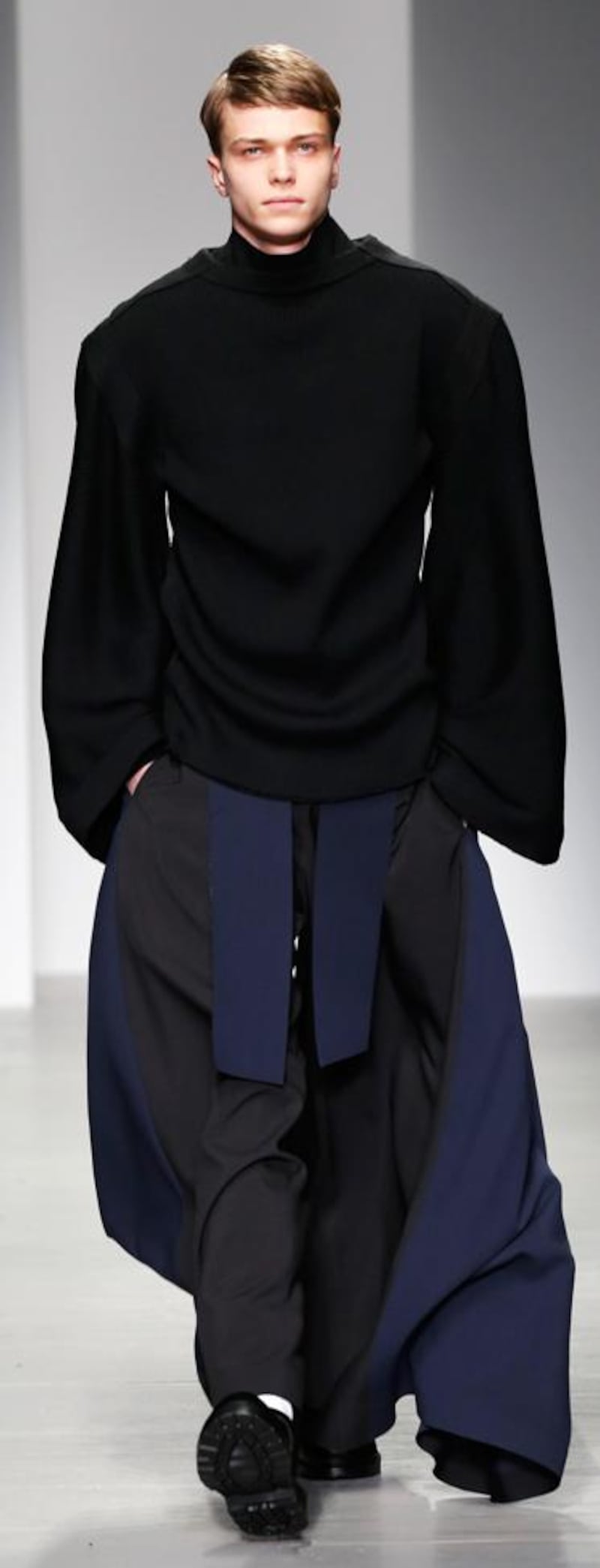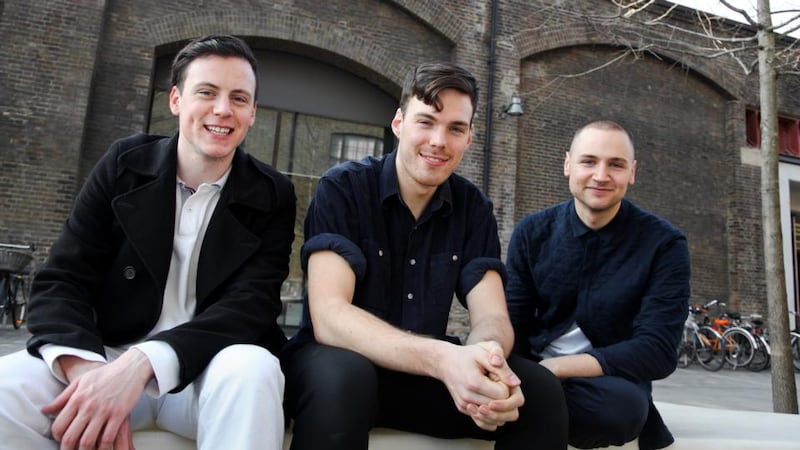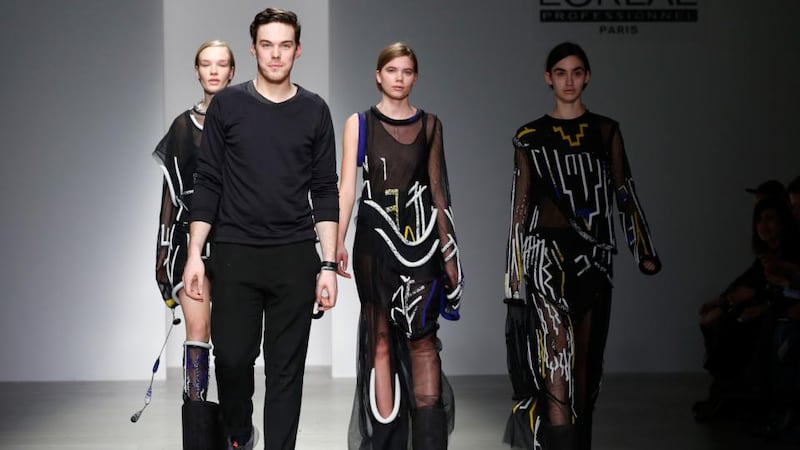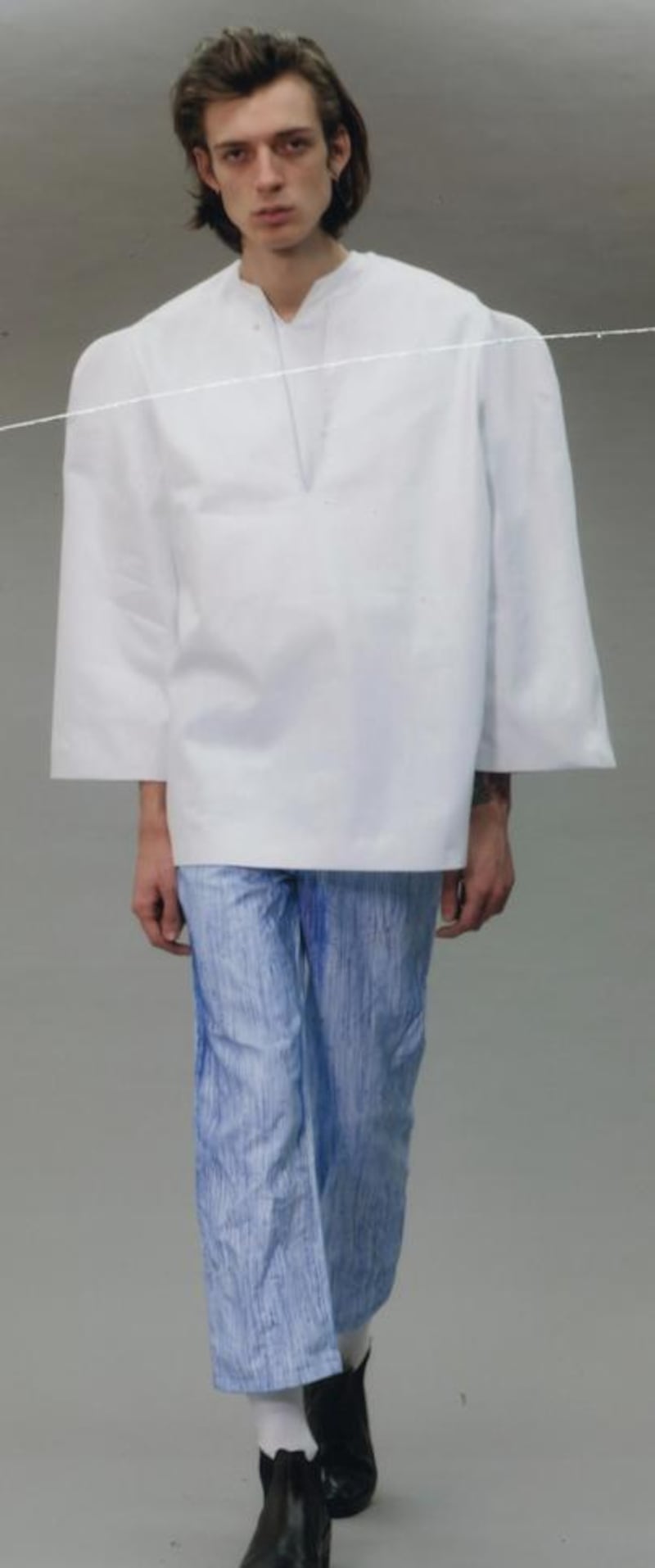
Meet Rory Parnell-Mooney, Sean McGirr and Michael Power. To employ an overstuffed pun, they’re in a class of their own – that class being the notoriously tough MA in Fashion at London’s Central Saint Martins. The three represent the largest nationality pie-slice of this year’s graduates, a small class of 21. “I don’t think there are even three English people in the year,” says Parnell-Mooney.
It is the most respected course of its kind in the world, with an astonishing number of graduates at the helm of their own label (think Alexander McQueen, Christopher Kane, or Ireland's own Simone Rocha) or in covetable positions at other companies. Michael Power, one of the course's stars and a winner of the L'Oreal bursary, which is awarded to students for an outstanding graduate collection, applied to Central Saint Martins "just because of the alumni, really. You know, it has such a reputation. There's so much mystery around it – from the outside you're not too sure what to expect. I used to look at the show every year and just be amazed at what was being created."


Under the supervision of the singular Prof Louise Wilson, the three have undergone a fairly gruelling two-year personal and creative process to finish their graduate collections.

“You’re always a piece of shit,” says the admirably blunt Galwegian Parnell-Mooney. “Then [Wilson] says that something’s OK, and you hold on to that little glimmer of ‘OK’ for the rest of the year and then eventually she says the word ‘fab’ and you go outside of the room and you start crying. I haven’t done that, though. I haven’t cried once on this course. Not once.”
It’s difficult to draw a connecting line between the three designers’ graduate work, so diverse are their influences and outcomes. Sean McGirr’s menswear collection, in white denim with powerful graphic blue biro scribbles, is about “rent boys. Of course you can’t print that,” he says, laughing.
He has a true and lasting love for denim. “Denim is quite an easy fabric to work with, but then you finish it like you would a tailored jacket or you do a huge amount of hand-stitching and make it really beautiful, so yeah. I always think that denim is quite important. It can be reworked and reworked and reworked.”
His fashion education has been unusually diverse, with interning stints at Burberry, Vogue Hommes International Japan and Taiwanese fabric producer Singtex. He has also worked as a writer for trend-forecasting company Stylus. “Huge amount of research. Massive,” say McGirr.
He’s close to his grandmother, who fed his love for fashion. “I was talking to her about my graduate collection last Sunday and she was like, ‘Are you not doing any hats? You should really do a hat like that one you did before.’ She’s always giving me ideas, and sometimes she’s really on the money.”
Michael Power has lived in Gorey, Co Wexford, “all my life. It was a pretty traditional Irish childhood. I stayed there until I was 18, then I went to NCAD in Dublin. I did fashion design for four years.”
Power's bursary-clenching, intricate, bead-and-mesh womenswear collection is based around three distinct influences: the swirling, circular sculptural forms of artist Jean Dubuffet; traditional Hopi kachina dolls "used to represent the gods and the spirits and all these different things, covered in all these amazing patterns"; and Daniel Cronin's photobook, The Gathering of the Juggalos , a documentation of devoted fans of the hip-hop group Insane Clown Posse. "They're just really sloppy, and they wear all these graphic T-shirts. It's just really grungy and kind of horrible and . . . You know what I mean. And they wear this silly makeup."
Modern primitivism
The three influences seem disparate, but all draw a line together of a modern primitivism – in pattern, ritual and, importantly, attitude. "I'm not really drawn to anything polite," Power says. "I think it's the edge that I was drawn to, really."
Similarly, Parnell-Mooney is not interesting in straightforward, decorative notions of beauty. “I’m not a soft, lovey-dovey kind of person – I’m quite straight to the point and that comes across in my collection as well. Even in the way that things are done up: there aren’t 100 buttons, there’s one tie, you pull it in and you pull it out and you’re done.”
Parnell-Mooney’s collection was initially based on pictures of nuns in Dublin in the 1920s and 1930s. His menswear collection is severe, angular, minimal. “One of a nun’s main aims is to never have pride, so it’s very much about covering the body.”
Some of his looks are very heavy. “In some looks there’s two pairs of trousers, a shirt, a scarf, a jumper, a bib and a full hat. I suppose it comes from that idea of a nun getting dressed to cover up the body and to be completely humble.”
Is there such a thing as an underlying Irish aesthetic in design or in the way Irish women dress? “There is a look,” says Sean McGirr. “There’s a pureness about it. That’s what Irish fashion is all about, really – coming from the sticks, referencing rural life, something that feels really raw. There’s a real rawness about Irish design.”
“I think it’s very down to earth and I think it’s very real,” says Power. “There are no airs and graces about the way Irish women dress, and that’s nice.”
Parnell-Mooney sums it up: “People call it Catholic guilt but I actually think it’s the perfect example of being humble. [Irish women] are like, ‘Oh no, don’t look at me. I’m so shy, don’t, no.’ And they do look great, you know.”






